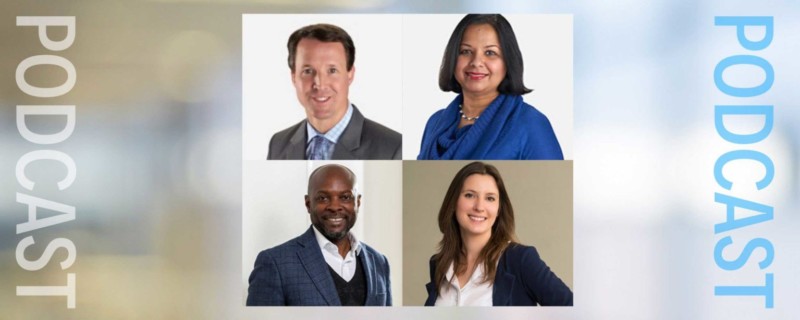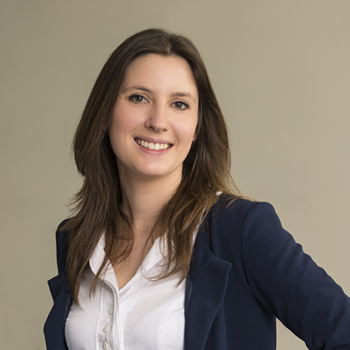
Bi-Specific Antibodies – The development, manufacture and promise of these cutting-edge therapeutics
Podcast: Download (Duration: 32:47 — 45.0MB)
Subscribe Here: Apple Podcasts | Spotify | RSS | More
Subscribe to the Cell Culture Dish Podcast on: iTunes | Google Play
Show Notes
We began the panel discussion with cell line development. I described how CHO cells have been a very successful workhorse in the manufacture of recombinant protein therapeutics and that CHO cell lines have been optimized over many years to provide the best productivity and product quality. However, as is, they are not optimized for newer protein therapeutics like bi-specifics. I asked the panel if they could share some of the key challenges with CHO cell lines and bi-specific production.
Yemi explained that stable production of a recombinant protein in any cell line requires efficient incorporation of the DNA encoding the protein into the reproductive machinery of the cell (most frequently the chromosomes in the nuclear matrix) in a manner that allows for efficient transcription, translation and secretion from the cell. He emphasized that this is not trivial, especially considering that foreign DNA have a propensity to be shut down as a result of different regulatory mechanisms. Furthermore, owing to the foreign nature of the protein, the translation and secretory machinery of the host cell may not be adequately suited to the protein. Bi-specifics add an even greater complexity, since the different chains of the bi-specific need to be transcribed and translated in precise stoichiometries that biases towards the correct assembly of the bi-specific moiety in question. Thus, there is a need for host expression cell lines comprising cell line and vector systems that ensure optimal transcription of the different chains in precise ratios to ensure the, translation, correct assembly and secretion of the bi-specific antibody in question.
Severine added information about specific challenges to the bi-specific cell line development process. The first is decreased productivity that is the result of the complexity of the bi-specific antibody format. The second challenge is that the cell line development process must be redesigned to meet the unique characteristics of bi-specific antibodies. When selecting a cell line, you must ensure production of the right molecule rather than the highest producing one.
Next we talked about how the team at Selexis has developed a series of modules for their technology platform that address the challenges with bi-specific production. Severine explained that there are many modules in their platform with three that are related to bi-specifics. The first is a flexible modular design. Selexis is able to modulate expression at the molecular scale and their strategy is to individually clone each polypeptic chain constituting a bi-specific antibody into an individual vector containing Selexis genetic elements. She explained that if you have a poorly expressing chain, you can increase the ratio or amount of the problematic chain as compared to the others. Then at the transfection stage, you can restore good assembly of the final bi-specific antibody format. Furthermore, if you need to increase expression levels you can reinject the transgene into the genomic DNA (called super transfection) to boost expression.
The second module is a reliable whole cell line, which is their proprietary CHO-M line. This is a single cell line designed for difficult to produce bi-specific antibodies in final assembled format. If there is a hard to express bi-specific, they will use their CHO-M libraries. The libraries consist of genetically modified CHO-M lines that co-express helper proteins, which target the specific expression pathway at the origin of the pro-expression.
Lastly, their third module is an optimized cell line development platform, which has the capacity to evaluate the quality of bi-specifics in the early stages of cell line development using high throughput screening at microscale.
I then asked about how clonality is established at Selexis. Severine explained that they are able to demonstrate single cell origin from a single progenitor cell at various stages. The first is during isolation of clones. If they are isolating cells from single colonies grown in semi-solid media, they will provide statistics to demonstrate monoclonality and this requires two rounds. If they are using their recently acquired technology based on imaging, they only need one round. The other way to establish monoclonality is based on whole genome sequencing. By using the sequence of the genomic data extracted from the cell, they can demonstrate that the signature the locus where the gene was inserted is unique among other clones.
Next, I moved to discussing the partnership between Selexis and KBI Biopharma to deliver Gene to GMP in 9 months. I asked how the partnership works and the competencies that each company contributes to that process.
Yemi began by explaining that Selexis and KBI became affiliated as sister companies in June 2017 following acquisition of Selexis by JSR Corporation, which is the parent company of KBI. Prior to the affiliation, KBI had performed process development and cGMP manufacturing on over 12 different RCBs expressing different types of products, including bi-specific antibodies, and had established a significant level of know how and experience in propagating these cells. Since their affiliation, Selexis and KBI have worked tirelessly to streamline the workflows across cell line development and process development to ensure seamless technology transfer, reduce redundancies and ensure a high level of success in manufacturing. For well-understood products, such as monoclonal antibodies, they have established a 9-month Gene to GMP workflow whereby early pools are transferred to KBI so that they can initiate Upstream/Downstream and Analytical method development leading to cGMP manufacturing. This parallel workflow is strongly enabled by the integrity of the pools, which correlates very closely with final clones both in terms of performance and also product profile.
Stewart added that to date, KBI has developed and manufactured more than 30 Selexis generated cell lines and of these 23 were bi-specific molecules. He went on to talk about how the enriched stable pools that Selexis creates, in a 4-6 week timeframe, are quite representative of the final cell line. Because cell line development is very quick, KBI can start process development a couple months sooner. As the companies came together as sister companies, integrated workflows were developed for process development, pre-formulation development and manufacturing. KBI uses these highly integrated workflows to produce monoclonal antibodies and bi-specific molecules. With bi-specific molecules, they can achieve full development from transfection to GMP drug substance typically in 11 months. In addition, Stewart said they have achieved titers as high as 10g/L, which is phenomenal for a bi-specific. The cell line technology that Selexis brings provides high heterodimer purity and with KBI’s downstream platform they can achieve very high purities above 95%, sometimes higher than 98%.
I then asked about the biggest challenges in process development and manufacturing for bi-specifics. Sigma said that by definition they are more complex and have a higher level of technical challenges during development and scale up. Some common challenges include heterodimer vs. homodimer ratio, fragments and aggregate levels. This requires more development especially in downstream. In upstream there is work needed to improve titer. Sigma shared that depending on the format, they have seen higher HCP (host cell protein) loads, which also requires more development. Clients tend to focus on potency of the molecule early on and not so much on the manufacturability. KBI works with clients to look at manufacturability as early as possible.
I followed up by asking how the KBI platform addresses these challenges. Sigma said that they conduct a manufacturability assessment to look at the biophysical characterization of the molecule as well as any process related challenges. Their analytics and formulation groups are involved in the process very early in development. KBI has also invested heavily in high throughput screening technologies for upstream, downstream and analytics to look at a wide range of process conditions early on and to identify the best process conditions to address some of the challenges discussed earlier. Also they conduct scale up as early as possible to identify any issues. With these different strategies they have been very successful in working with a wide variety of formats of bi-specifics and bringing them to clinic.
Next I asked about their success with gene to GMP in nine months and what capabilities each company brings to the process in order to achieve such a rapid timeline. Yemi began by stating that it is important to note that typically they expect fast timelines to apply when the molecule is very well understood and has a straightforward downstream purification process. This applies to molecules such as easy to express monoclonal antibodies. Attributes on the cell line side that allow for moving quickly are predictability in the cell line development process and the ability to apply different modules based on the complexity of the molecule. They have demonstrated a strong track record that their process is highly predictive.
Second, establishing stable pools in about four weeks provides the speed required in cell line development. The pools are transferred to KBI for process development and Yemi explains, it is important that the pools are predictive of the final clone, so the process that KBI establishes becomes applicable to the final clones. This enables development in parallel. Yemi also highlighted the strong knowledge base across both companies and the tools to address challenges as they arise. Finally, the analytics that they are able to leverage very early in pool screening allows rapid characterization of the cell lines and the product.
Stewart added that he feels the two biggest factors that drive speed are the enriched pools that are representative of final cell line and the highly integrated and overlapping workflows. He emphasized that to be able to pull off that timeline, you need sharp scientists that are paying attention to data as it becomes available and based on experience, are making decisions needed to keep the workflows moving forward.
He went on to say that the relationship with partners is key. All parties must work hand in hand to understand the data and join together to make key decisions. Finally, analytical tools are critical to solving issues as they arise.
Next I asked which steps in the process offer the biggest opportunity for efficiency and timesavings. Yemi started by saying that from the cell line development side, it is the early pool generation that is representative of the final cell line. This allows process development to operate in parallel with cell line development activities.
Stewart said that their process development typically culminates in a 200 liter demonstration run that uses the final process, final cell line and final analytical panel. This run usually becomes the IND enabling toxicology batch for their partners. The other value of the pilot scale run is that it scales extremely well to 2,000 liter single-use bioreactors. KBI is able to make GMP batches at 2,000, 1,000, or 500 liter scale based on clinical needs. They can also do a smaller scale if needed.
With that scalability, he explained that they don’t need to do engineering runs. Without the need for engineering runs they can shave a few months from the timeline and also provide cost savings for their partners. However, they are happy to do engineering runs if partners have a need for material supply or larger data sets.
I then put myself in their partners’ shoes and asked about the customer experience working with Selexis and KBI. I also asked what partners can do to make the process move as smoothly and efficiently as possible. Yemi described the customer experience as being one of service satisfaction. When biopharma comes to them, they rely on the several years of experience and successful track record of developing high performance cell lines for recombinant proteins that differ widely in structure and composition. Importantly, they rely on the proprietary tools that they are able to bring to bear to address any unforeseen issues that may arise during the cell line development process.
Stewart said clients see technical competency with a focus on the science, but that they are also very flexible and work with partners to find a schedule and scope that meets their needs. Stewart asked Sigma to weigh in as her team runs 40-50 of these programs per year. Sigma said she believes flexibility and the transparency of sharing data and opinions about the molecule and the process are key. KBI sees themselves as partners with their clients with the success criteria being bringing the molecule to clinic.
I asked both groups to comment on what still needs to be done to see bi-specifics reach their full potential, particularly with respect to cost and manufacturability. Yemi said that they experience a very high success rate of projects based on leveraging a proven cell line development, process development, analytics and manufacturing technology platform to establish high performance processes. Cost and manufacturability are an important part of that equation. He shared one thing that they have realized about bi-specific antibodies is that the level of diligence used upfront in the design and protein engineering of the bi-specific pays dividends later in the form of high producing cell lines with minimal production liabilities.
Sigma weighed in that for cost and manufacturability you need a high producing cell line and a simpler purification process. It is also important that that the process doesn’t require unusual raw materials to achieve purity. She went on to say that a lot of the bi-specifics that they work on have high titer, up to 10 g/L, and pretty high purity of heterodimers from the start. To be fully proficient at manufacturing bi-specifics you need to consider the platform, the format and conduct the manufacturability assessment as early as possible. It is critical to look at the overall cost, not just the activity of the molecule.
I asked the panel if they could look into their crystal ball, where they see bi-specifics in the next 5 years. Yemi said that they are definitely seeing a growth in bi-specific antibodies as a therapeutic modality to treat previously untreatable diseases such as cancer and even infectious diseases. More recently, the ASH conference was an eye opener to this class of products. The meeting showcased several early clinical success stories in oncology, especially when compared against other therapeutic modalities such as the CAR-Ts. Partly responsible for this wave of increased development are the lessons learned from previous generations of bi-specific antibodies. With this, researchers are getting much better at designing molecules with the right functional and manufacturable attributes. To close the loop, Selexis has been working hard to adapt cell line technologies and workflows to the optimized expression and production of this class of molecules. Selexis believes that this is due to the success these products are demonstrating in treating unmet medical needs in areas such as cancer.
Sigma said she believes that the trend from monoclonal antibody to bi-specific therapeutics will continue. In fact, over the next five years she expects bi-specifics and multi-specifics to become more of a primary component of portfolios. As clinical data is published, she said to expect more of a convergence in terms of the bi-specific format that is best suited for efficacy as well as manufacturability.
I closed the interview by asking if the panel had anything else to add for listeners. Yemi reiterated that to date Selexis has worked on over 30 different bi-specific antibody programs with various designs, some of which were more complex than others. The majority of these were transferred to KBI for process development and manufacturing. He said, “one thing that stands out in our process is that we are able to see good predictability by leveraging our modular workflows all the way from cell line development through process development and scale up to manufacturing.” Typically they see productivity ranges comparable to standard mAbs e.g 2-5 g/l with over 95 % heterodimer purity at production scale (200 – 2000L scale).
Stewart said that he and Sigma have been doing this for a long time and they are quite proud of their offering. He said having the foundation of Selexis’ Sure Technology is a lot of fun for their development scientists because they know there is potential to really improve titers and have high purity from purification.
He reiterated that scalability to manufacturing has gone very well and is the result of three years of focus for KBI. This high success rate has provided lots of confidence for new programs coming in the door. They look forward to helping bring more partners to IND and first in human and down the road, late stage development and commercialization.
For more information, please see Selexis and KBI Biopharma
Meet our Panel:
 Séverine Fagète, PhD, VP, Cell Line Development Services
Séverine Fagète, PhD, VP, Cell Line Development Services
Séverine joined Selexis in December 2015 to lead the Cell Line Development, the Bioprocess and the Analytics Departments. In her role, she ensures the continuous generation of high-performance stable cell lines, including recombinant protein characterization. Séverine also works on providing scale-down bioreactor data using Ambr® 15 to facilitate the transfer to CMOs. Séverine earned her PhD in protein engineering from a private company, Novimmune, where she focused on the generation of broad-spectrum chemokine inhibitors by using directed mutagenesis, phage display isolation, functional characterization and epitope mapping. She subsequently held a postdoctoral position at the University of Geneva (CH, Prof. Hartley’s group) where she designed a novel phage display platform for accelerating bispecific antibody development.
 Yemi Onakunle, PhD, MBA, Chief Business Officer
Yemi Onakunle, PhD, MBA, Chief Business Officer
Yemi has over 20 years of experience in drug manufacturing and cell line development. Prior to working at Selexis, Yemi was director of commercial development at Diosynth RTP Inc. and associate director of business development at Lonza Custom Manufacturing – organizations that provide process development and cGMP manufacturing services in mammalian production platforms. More recently, Yemi was head of sales and marketing at Bachem Americas Inc. – a contract manufacturing organization that focuses on peptides and complex organic molecules. In these positions, he has had a strong record of consistently growing the customer base and sales and expanding product offerings into new markets. Yemi is a member of the board of directors of VLP Biotech Inc, a vaccine development company that is based in San Diego, CA and has been a business advisor to several biopharmaceutical and drug delivery companies. Educated in the UK, Yemi holds a PhD from the University of Kent at Canterbury and an MBA from Imperial College Management School.
 Stewart McNaull, Ph.D., Senior VP, Business Development
Stewart McNaull, Ph.D., Senior VP, Business Development
Stewart has nearly 20 years of experience in biopharmaceutical process development and manufacturing with a focus towards driving technology innovation to the manufacturing floor. He has led upstream process development and cGMP manufacturing groups, managing clinical and commercial program supply. Stewart has been a leader in the evaluation of single-use technologies and has played a key role in the design and implementation of five cGMP single-use manufacturing streams globally. He has designed several innovation initiatives, including development of new technical offerings for sales and marketing launch. Stewart maintains a strong industry presence by presenting at major conferences and as a steering committee member of the BPOG industry consortium for Technology Roadmapping. His previous experience includes technical roles at Bayer Biologics, followed by 15 years of biopharma CDMO technical and management experience. Stewart earned his Ph.D. in Chemical Engineering/Bioengineering at Georgia Institute of Technology.
 Sigma Mostafa, Ph.D., VP, Process Development
Sigma Mostafa, Ph.D., VP, Process Development
Sigma has nearly 20 years of experience in process development, process characterization and validation, and manufacturing of therapeutic proteins. At KBI, she is in charge of the cell line, upstream, downstream, and analytical development groups that support development of 40 – 50 molecules per year. These molecules encompass all phases of development and represent mAbs, bi-specifics & fusion proteins, enzymes, vaccines, and complex glycoproteins. Prior to joining KBI in 2010, she was with Eli Lilly & Co. and Diosynth Biotechnology. At Lilly she led a process development group and also the high throughput cell line selection group and was a CMC Core Team Leader. At Diosynth she was manager of the Cell Culture group and was responsible for developing in-house (Merck) and client processes. Sigma’s core expertise are in phase I through commercial process development, scale-up/scale-down, and tech transfer. Sigma earned her Ph.D. in Chemical Engineering from Northwestern University. She completed her B.S. in Chemical Engineering from the University of Texas at Austin with High Honors.